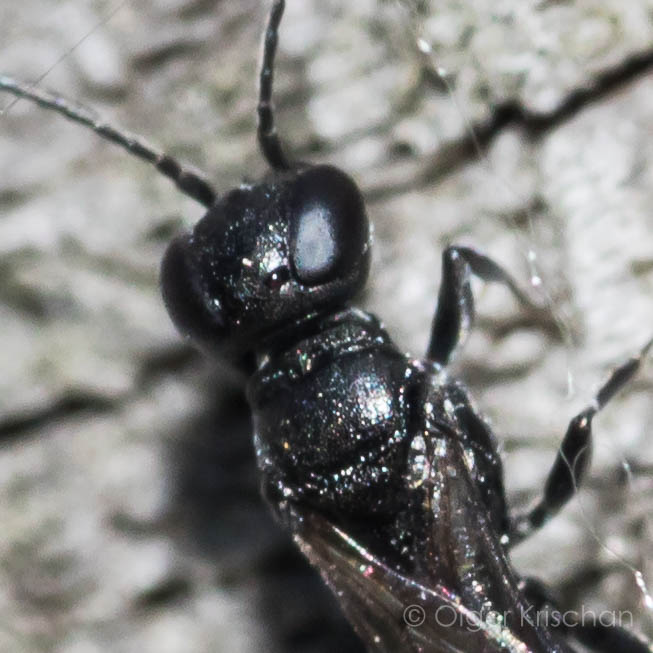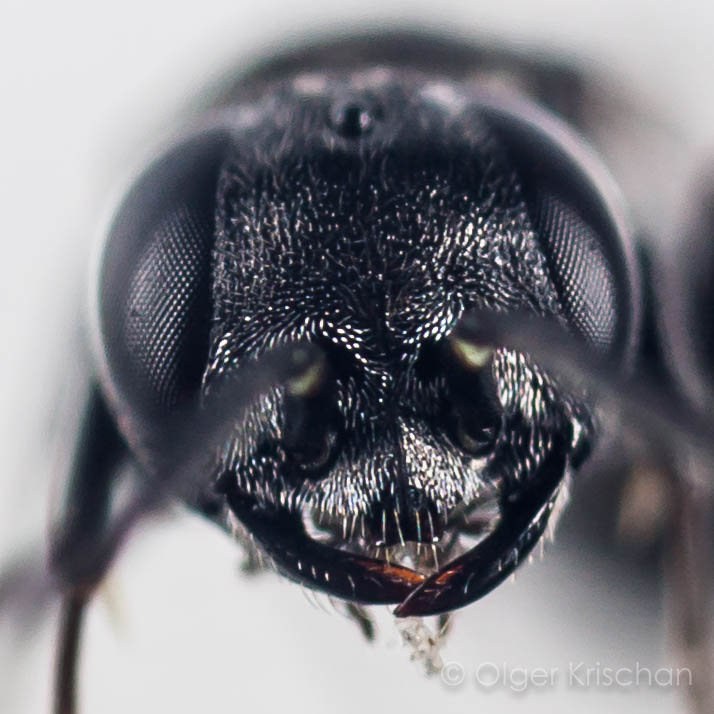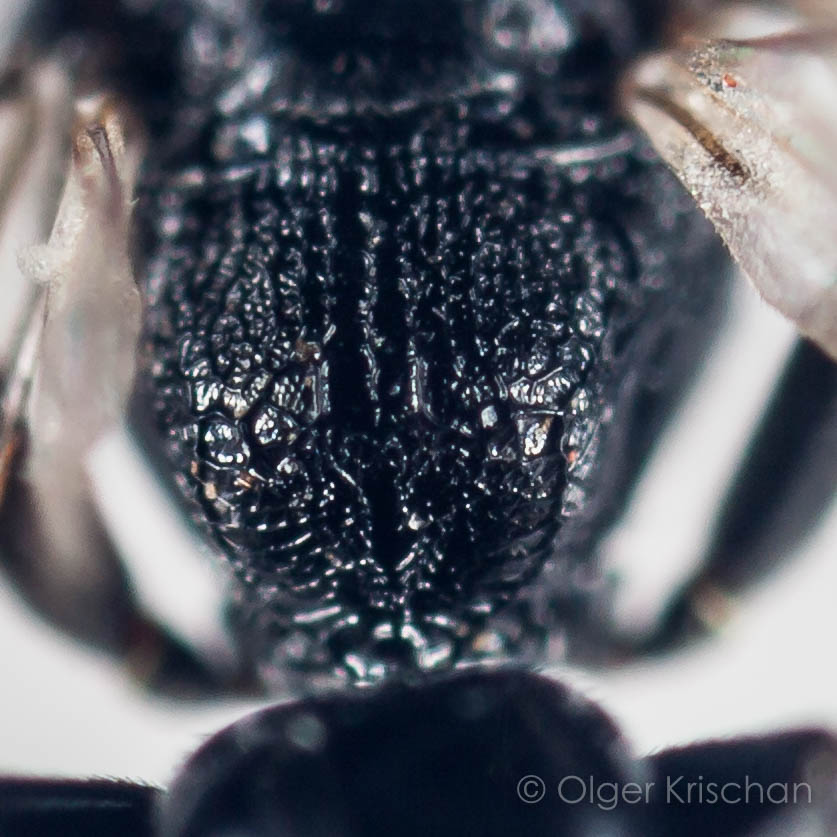Official name
Synonyms
Nitela borealis [1]
none
see more on: www.gbif.org
CONTENTS
1. Distribution
2. Behaviour
3. Plant relations
4. Parasitic relations
5. Identification
1. DISTRIBUTION
Nitela borealis is a rare [5] digger wasp that can be found throughout the Netherlands [3].
Garden species
In my garden it is a permanent resident and can be found with multiple specimen on the bee hotels and on sunny walls.
2. BEHAVIOUR
2.1. ACTIVITY
The species is active from half May to begin October [3].
2.2. DEVELOPMENT
Nests are made in old beetle tunnels and in dead wood, trunks and poles [3,7].
Bee hotel
The species is active on bee hotels where it also nests [4]. They prefer small bore holes.
3. FOOD PLANTS
I did not find any literature references with regards to plant visits.
4. PREY RELATIES
The species uses nymphs of woodlice (Psocoptera) for larval food [3,7].
5. IDENTIFICATION
Length male 3-4 mm [4]
Length female 3-4,5 mm [4]
Genus
The genus Nitela can be identified using the following characters:
1. Small black species [2,6,8]
2. One submarginal cel in frontwing [2,6,8]
3. Hindwing without clear veins [2,6,8]
4. Inner eye edges converge upwards [2,6,8]
4. Antennae very low on the head [2]


specimen caught for photo identification on 31-v-2020


1. Female with 12 antennal segments and 6 abdomen segments

specimen caught for photo identification on 28-v-2020


2. Males with 13 antennal segments and 7 abdomen segments

KOP
1. Vertex in front of ocelli, mesonotum and scutellum punctuated [2,6,8]
3. Clypeus with strongly developed medial longitudinal keel that almost reaches the front margin [2]
4. Clypeus with 3 well developed teeth [2]
5. Cheeks (gena) very finely and densely striped, almost no space and punctation between the stripes [8]
THORAX
1. Mesonotum punctated [2,6,8]
2. Propodeum dorsally smooth with branched carinae [2,6,8], in some specimen partly net-like [2]
3. Propodeum dorsally and space between the carinae shiny [2,6,8], more or less uneven, seldom clearly chagrined (finely scarred) [2]
ABDOMEN
1. Tergites dorsally without punctation in most specimen [2,6,8]
Literature
1 Nederlands Soortenregister2 Hermann Dollfuss, "Bestimmungsschlüssel der Grabwespen Nord- und Zentraleuropas (Hymenoptera, Sphecidae) mit speziellen Angaben zur Grabwespenfauna Österreichs", Publikation der Botanischen Arbeitsgemeinschaft am O.Ö.Landesmuseum Linz, LINZ, 20. Dezember 1991
3 Peeters, T.M.J., C. van Achterberg, W.R.B. Heitmans, W.F. Klein, V. Lefeber, A.J. van Loon, A.A. Mabelis, H. Nieuwen-huijsen, M. Reemer, J. de Rond, J. Smit, H.H.W. Velthuis, 2004. De wespen en mieren van Nederland (Hymenoptera: Aculeata). – Nederlandse Fauna 6. Nationaal Natuurhistorisch Museum Naturalis, Leiden, knnv Uitgeverij, Utrecht & European Invertebrate Survey – Nederland, Leiden.
4 Breugel, P. van 2014. Gasten van bijenhotels. – EIS Kenniscentrum Insecten en andere ongewervelden & Naturalis Biodiversity Center, Leiden.
5 Waarneming.nl
6 KLEIN, Wim. De graafwespen van de Benelux. Jeugdbondsuitgeverij, Utrecht, 1996, 1-130. + KLEIN, Wim. De graafwespen van de Benelux: supplement. Jeugdbondsuitgeverij, 1999.
7 Blösch, M. (2000). Die Grabwespen Deutschlands – Lebens‐weise, Verhalten, Verbreitung. 71. Teil. In Dahl, F.: Die Tierwelt Deutschlands. Begr.: 1925. – Keltern (Goecke & Evers). – 480 S. 341 Farbfotos. ISBN 3‐931374‐26‐2 (hardcover). DM 98,–. Zool. Reihe, 78: 353-353. https://doi.org/10.1002/mmnz.20020780208
8 JACOBS, H. J (2007): Die Grabwespen Deutschlands Ampulicidae. Sphecidae, Crabronidae–Bestimmungsschlüssel in Blank, SM & Taeger, A (Hrsg): Die Tierwelt Deutschlands und der angrenzenden Meeresteile nach ihren Merkmalen und nach ihrer Lebensweise, Hymenoptera III–Keltern, Goecke & Evers, 79: 1-207.






























